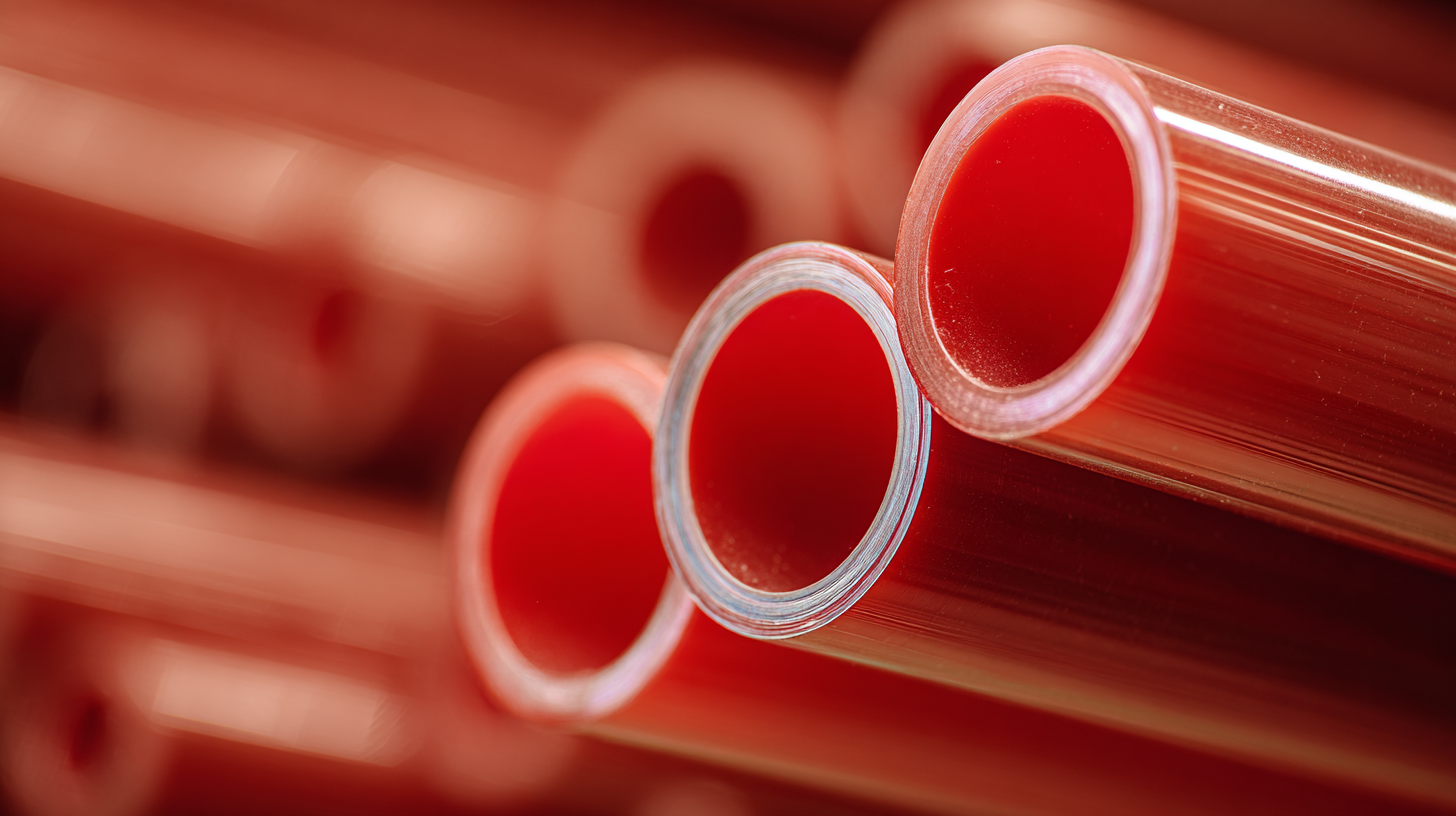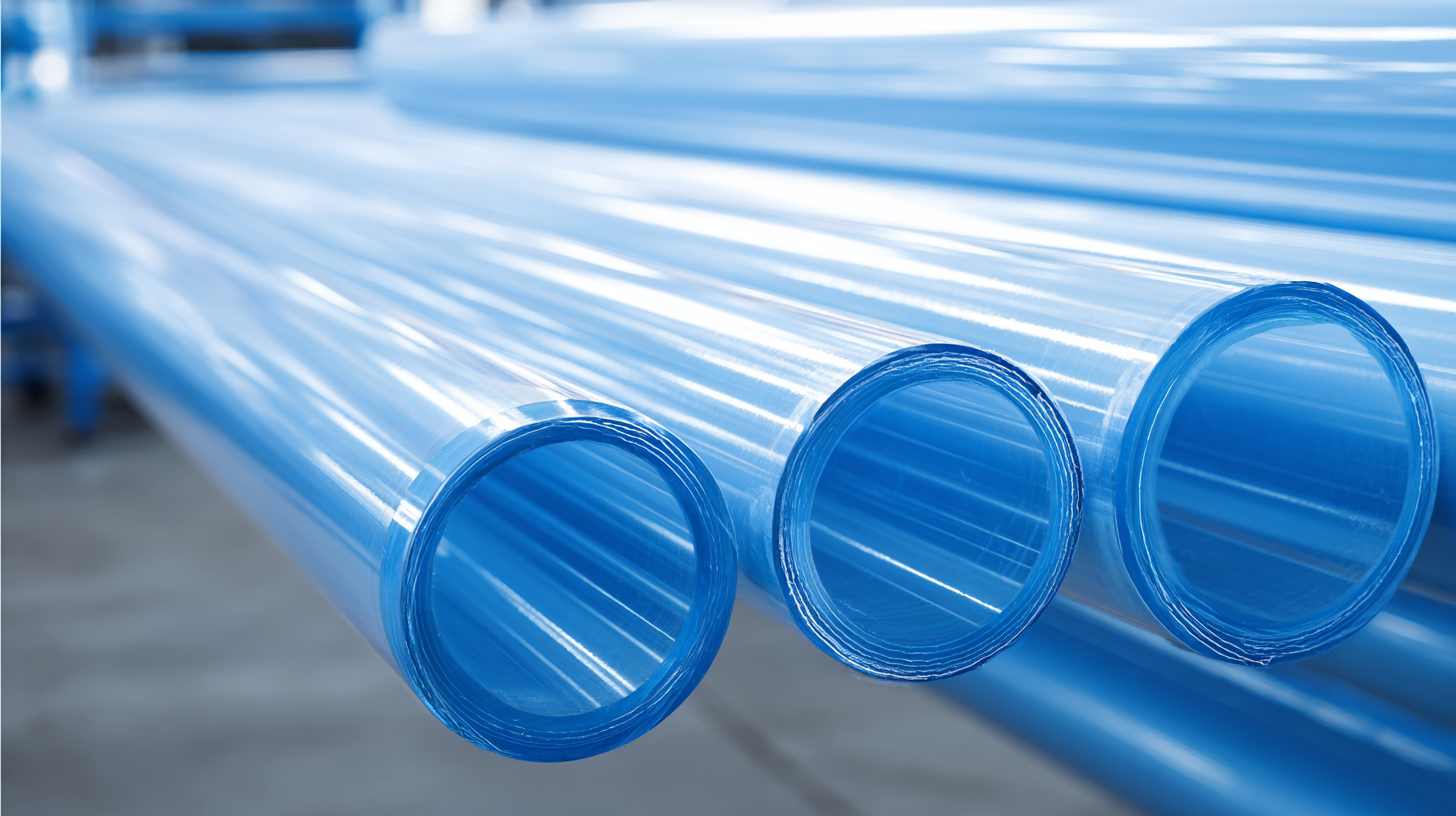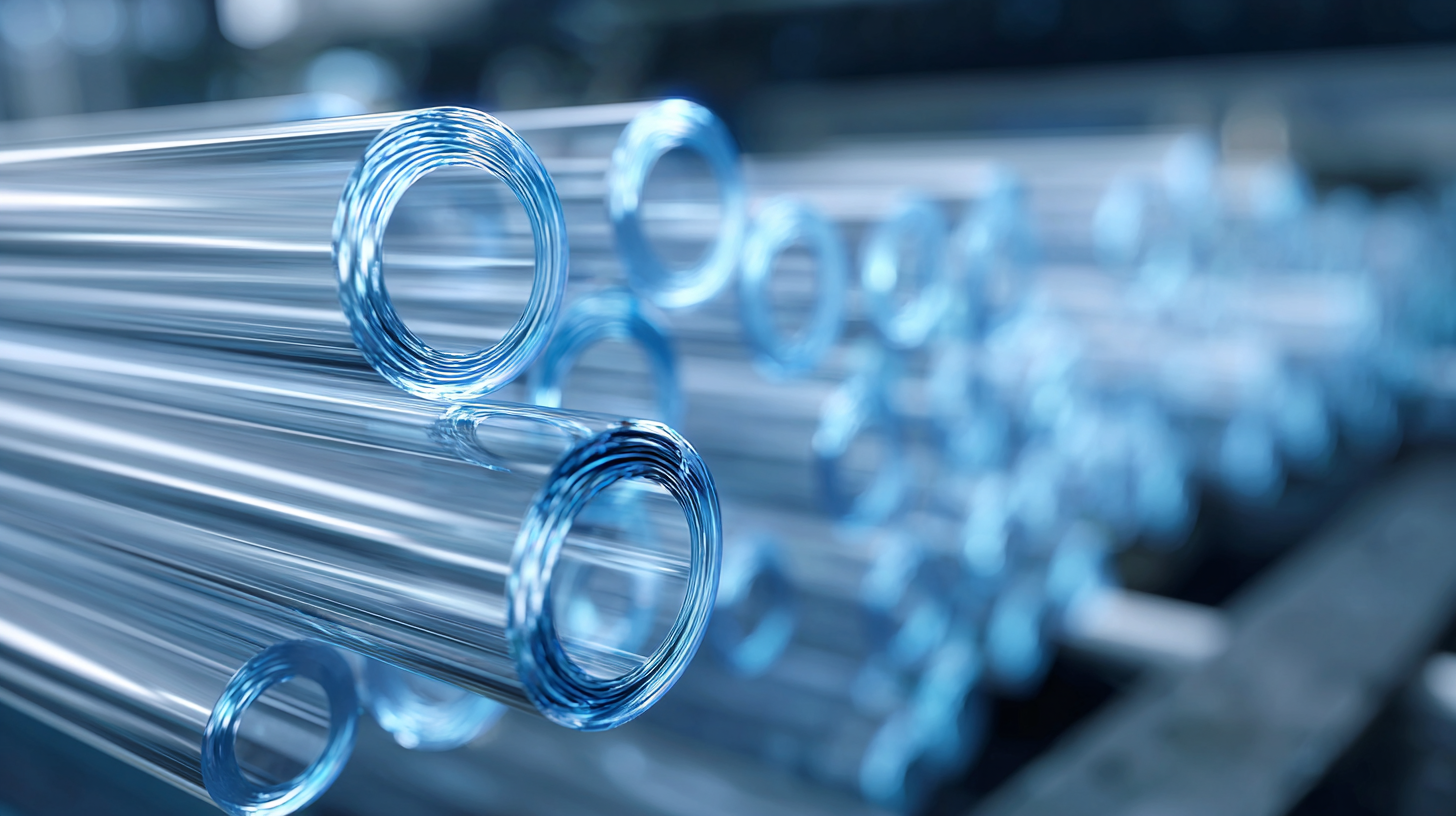Leave Your Message
As global manufacturing continues to evolve in 2025, the demand for high-quality materials such as Polyethylene Tube is becoming increasingly critical. According to the Global Market Insights report, the polyethylene tubing market is projected to reach over $10 billion by 2025, driven by its versatility and application in various sectors including medical, construction, and food packaging.

However, the industry faces key challenges such as material degradation, supply chain disruptions, and compliance with stringent environmental regulations. Identifying these issues is essential for manufacturers aiming to leverage the benefits of Polyethylene Tube while maintaining sustainability and efficiency in production processes. As we navigate these complexities, understanding the implications of using the best Polyethylene Tube will provide insights into enhancing operational resilience and innovation within the manufacturing landscape.
The polyethylene tube industry is poised for significant transformation by 2025, driven by several key trends that are reshaping global manufacturing. One of the most notable trends is the increased focus on sustainability. As environmental concerns grow, manufacturers are now prioritizing eco-friendly materials and production methods. This shift not only caters to consumer demand for greener products but also aligns with regulatory requirements promoting sustainable practices.

Another emerging trend is the rise of smart manufacturing technologies. The integration of IoT (Internet of Things) and automation within the production process enhances efficiency and quality control. Companies are investing in advanced analytics to optimize their manufacturing operations and reduce waste. As these technologies become more accessible, we can expect to see a shift in how polyethylene tubes are produced and distributed.
Tips: To navigate these trends successfully, manufacturers should consider investing in sustainable sourcing strategies and exploring partnerships with tech companies for automation solutions. Additionally, staying informed about regulatory changes will help firms remain compliant while enhancing their operational practices. Adapting to these trends can position businesses to thrive in the evolving landscape of global manufacturing.
The adoption of best polyethylene tubes in global manufacturing presents several challenges that can impede progress and efficiency. One major issue is the inconsistency in quality among suppliers. Manufacturers often encounter variability in the physical properties of polyethylene tubes, which can lead to complications in production processes. Ensuring that the materials meet specific industry standards is essential, but the lack of uniformity can result in increased costs and production delays.
Another significant challenge is the environmental impact associated with polyethylene production and disposal. As manufacturers strive to adopt sustainable practices, they must consider the lifecycle of the tubes they use. The transition to recyclable or biocompatible materials may require significant investment and research, creating a barrier for many companies that are already operating on tight margins. Balancing performance, cost-effectiveness, and ecological responsibility remains a complex dilemma for manufacturers in the quest to implement the best polyethylene tubes in their processes.
| Issue | Description | Impact Level | Solutions |
|---|---|---|---|
| Material Quality | Variability in quality can lead to product failures. | High | Regular quality audits and certifications. |
| Cost Competitiveness | Higher upfront costs limit adoption rates. | Medium | Bulk purchasing and negotiation strategies. |
| Regulatory Compliance | Difficulties in meeting international standards. | High | Engage compliance experts for guidance. |
| Supply Chain Issues | Disruptions in supply can delay production. | High | Diversify suppliers and stock inventory. |
| Technological Integration | Compatibility issues with existing systems. | Medium | Invest in training and upgrade systems. |
The use of polyethylene (PE) tubes in global manufacturing is critical for enhancing production efficiency. During the upcoming CHINAPLAS 2025, innovations are expected to be showcased that leverage advanced techniques such as injection molding, blow molding, and profile extrusion. These processes not only optimize the manufacturing workflow but also improve the structural integrity and performance of PE tube applications in various sectors, including industrial machinery, automotive, and construction.
Moreover, as manufacturers strive for sustainability, the integration of polyethylene and polypropylene (PP) in production lines aims to address key issues like waste reduction and energy efficiency. Companies will present their cutting-edge solutions designed to enhance the functionality of polyethylene tubes, enabling better fluid dynamics, chemical resistance, and longevity. This shift towards innovative polymer applications is set to redefine the landscape of global manufacturing, fostering a more efficient and environmentally friendly production paradigm in the coming years.
The global manufacturing landscape is witnessing a significant surge in demand for polyethylene tubes, projected to grow from $4.41 billion in 2022 to an impressive $9.08 billion by 2029, resulting in a remarkable compound annual growth rate (CAGR) of 10.8%. This growth is driven by the increasing application of polyethylene tubes across various industries, including packaging, construction, and automotive. The versatility they offer makes them an essential component in modern manufacturing processes.
In a broader context, the plastic container market is expected to escalate from $218.04 billion in 2024 to $344.79 billion by 2032, achieving a CAGR of 5.9% during the forecast period. This indicates a robust demand for a range of plastic products, where polyethylene tubes will play a critical role. Moreover, the resin market, anticipated to grow at a 5.0% CAGR, further emphasizes the ongoing trend of utilizing advanced materials for improved durability and efficiency in production.
**Tips:** When choosing polyethylene tubes, consider their thickness and flexibility to ensure they meet the specific requirements of your application. Moreover, keep an eye on market trends to optimize your procurement strategy and stay ahead of competitors. Leveraging data from industry reports can aid in making informed decisions, ensuring your manufacturing processes remain efficient and cost-effective.
When selecting quality polyethylene tubes for manufacturing, understanding the specific requirements of your application is crucial. Different industries may demand varying specifications, such as chemical resistance, temperature tolerance, and flexibility. Conducting a thorough analysis of these factors will help in choosing the right type of polyethylene, whether it be low-density polyethylene (LDPE) or high-density polyethylene (HDPE). Additionally, consulting with suppliers about their manufacturing processes can yield information on the reliability and consistency of their products.
Quality assurance is another vital aspect when sourcing polyethylene tubes. Effective practices include demanding certifications and testing results to ensure the tubes meet industry standards. Look for suppliers who employ rigorous quality control measures and have a track record of reliability. Furthermore, consider the tube's lifespan and performance in real-world conditions, as this can significantly affect your production efficiency and long-term costs. Establishing strong communication with your supplier can also facilitate better service and support, ensuring that your manufacturing processes remain uninterrupted.

